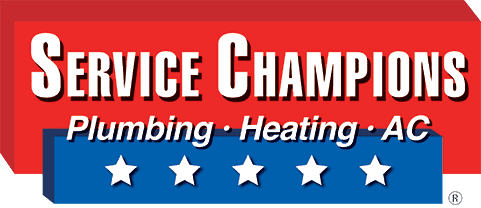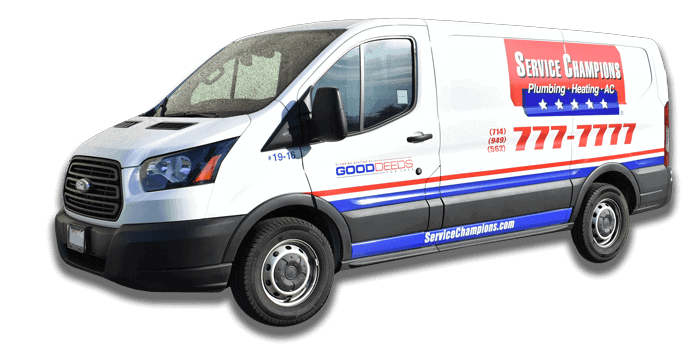Do You Know What’s Inside Your Furnace? Find Out What Makes Your Furnace Tick.
We humans have come a long way since the days of living in a cave with only a fire providing heat. Today’s “caves” are our modern homes — sophisticated structures kept uniformly warm by whole-house heating systems, often with a furnace as the backbone of the system.
While it may be tempting for homeowners to take their furnace for granted, it pays to have knowledge of how it works.
The more you know, the more you can ensure that your furnace is well-maintained and operating safely and efficiently. When that is the consistent state of your system, it’s going to last longer. You’ll be more able to take care of any minor problems that crop up on your own, and you can speak knowledgeably with an HVAC pro when needed.
Most important of all, when you understand the basics of how your furnace operates, you’re going to more often enjoy a home that’s comfortably warm when it matters most.
Do you know what’s inside your furnace? Here’s a primer on what makes your furnace tick from Service Champions.
Key Takeaways:
- Knowing how your furnace operates is a key part of knowing when things go wrong.
- With some know-how, you can DIY simple furnace issues in between regular furnace service.
Furnace Types
There are three basic types of furnaces: electric, gas, or oil. The first thing to know is what type of furnace you have.
Electric Furnaces
Electric furnaces are becoming increasingly popular. An electric furnace generates heat when electricity passes through heating elements that are typically made from nichrome or tungsten, two materials with high electrical resistance. That property of resistance is what creates heat when electrical current flows through it. When those elements heat up, they heat the surrounding air which is then circulated by a blower or fan through the air duct system of your home. There is no combustion process in an electric furnace.
Gas Furnaces
Many homes have a gas furnace. These furnaces burn natural gas or propane in a combustion chamber that’s made of a material like cast iron, steel, or ceramic to contain and control flames and extremely hot temperatures. The heat from that chamber is transferred to the heat exchanger, then a blower pushes the warm air through a system of air ducts that release it into all the rooms of your home. Some gas furnaces have a secondary combustion chamber that burns leftover gas and particles for maximum efficiency.

Oil Furnaces
Still used in some regions, these days, oil-fueled furnaces are less common than either electric or gas models. Oil furnaces operate in essentially the same way as gas furnaces, using kerosene or diesel as their fuel.
Furnace Operation
All furnaces operate by generating heat in some way, then the heat is transferred to the surrounding air, and the air is circulated through a system of air ducts. Each type of energy source has specifics as to how this occurs and its safety considerations.
Heat Generation
Your furnace first produces heat, either through electric current running through electric-resistant elements, or through the burning of gas or oil, called combustion.
Combustion Basics
Gas and oil furnaces that employ a combustion process to burn fuel have burners that mix the fuel with the appropriate amount of air so that it will burn properly. That fuel and air mixture is ignited either with a pilot light in older systems or with an electronic ignition, which can be a Hot Surface Ignition (HSI) or an Intermittent Pilot Ignition (IPI).
Heat Exchanger
Made of a material that can handle very high heat without corroding or breaking down, such as ceramic or steel, the heat exchanger is the heart of your furnace. It transfers the heat that’s been generated to the surrounding air.
In gas or oil-fueled furnaces, the heat exchanger prevents gasses from combustion from mixing with the air that will be circulated into your home. It requires the right balance of airflow and combustion to perform correctly. If the balance of air to fuel is off, it can result in carbon monoxide being emitted from the furnace, which presents a serious health hazard.
Heat exchangers in gas and oil furnaces can also become cracked or corroded over time as they’re exposed to very high temperatures, so it’s important to have them checked and cleaned regularly.
An electric furnace is a simpler operation as there is no combustion or need for a combustion chamber. Electric current running through resistant elements creates heat, which the heat exchanger transfers to the surrounding air.
With long-term use, the electrical elements in an electric furnace can wear out, or the furnace and thermometer can develop other issues. Periodic inspection and maintenance will help you avoid these kinds of problems.
In both gas and oil-fueled furnaces as well as electric systems, it’s important to keep the heat exchanger free of dust and debris so that the heat exchange isn’t blocked.
Ventilation & Air Circulation
A blower fan moves air across the heat exchanger where it’s warmed. That warm air is then distributed throughout your home via a system of air ducts.

Ventilation
The key to a well-functioning furnace is the ventilation system, which typically consists of:
- Ductwork, which is a system of tubes or other channels through which all the air in the system travels, both the warmed air from the furnace and the air that’s returned back into the system.
- Blower fan that pushes the warmed air through the ductwork into the various rooms of your home.
- Air intake vents that bring fresh air from the outdoors into the system
- Exhaust vents that expel polluted or stale air outside. These are usually placed in the attic, kitchen, and other places where exhaust fans are used.
- Air filters that are used at the air intake vents may also be at the furnace. These trap allergens, dust, and other particles to keep your indoor air clean. It’s critical to the long-term durability of your system and to your indoor air quality that you keep your filters clean.
- Grills and registers on the walls, along baseboards, or in the ceiling where air enters the room or is extracted back into the system.
Some furnaces have ventilation systems that also include:
- Carbon Monoxide Detectors:that check for carbon monoxide gas in your indoor air, as a safety precaution.
- Energy or Heat Recovery Ventilator:that helps maximize energy usage by taking the last remaining heat or energy from the exhaust air as well as pre-conditions the fresh air coming in.
- Ventilation Controls:These have ways of measuring the humidity, indoor air quality, and other levels that you set to change the amounts of exhaust and fresh air being used.
Ductwork Basics
Ducts can be made of different materials, depending on the application.
Flexible ducts are plastic or metalized polyester-covered spiral wireframes that look like long flexible tubes. They work well in situations where less flexible ducts would be difficult to install. However, they can be easily damaged by pests or human accidents and are less durable than other options.
Sheet metal ducts last a long time and their smooth surface has very little resistance to impede air flow. Fiberglass duct board is lightweight, pre-insulated, and relatively easy to install. All types of ducts should be well insulated to ensure that as little energy or heat is lost as possible as the air travels through.
Thermostat-Regulated Temperature
The thermostat in your home continuously monitors the temperature of the inside air. When the temperature drops below the threshold related to the level you set it to, the thermostat signals to the furnace to start another round of the heating process.

You might think of your thermostat as the brain of your whole-house heating system. Advances in technology have impacted the thermostat and temperature-regulating part of modern furnaces more than any other part of the system.
Setting the desired temperature is step one of the thermostat system. In older systems, this is done manually. The newest systems, however, allow you to control the thermostat in other ways, including:
- Remotely using a smartphone app that allows you to set a time to change the temperature in your home.
- Hands-free via Wi-Fi and a smart home system or a voice-activated home virtual assistant such as Alexa.
- Automatically the system itself learns through your use of the above the patterns of your life and your preferences, or it uses geofencing to know when you’ve left the house or are coming home, adjusting the temperature to know to not heat the home as much when no one is there.
The thermostat has sensors that tell it the indoor temperature of the home. Modern thermostats use electronic sensors that are more accurate than those in traditional systems that use a mercury switch or bi-metallic coil.
The thermostat uses an electric signal that goes to the control board of the furnace when needed to restart the heating process when indoor temperatures drop below the desired level.
Working Knowledge for a Working Furnace
The more you know about how your whole-house furnace works and how to take care of it, the longer you’ll enjoy a comfortable home and the energy savings available through a top-performing system.

When you keep your furnace properly maintained with clean filters and other key elements, as well as periodic professional inspections and maintenance, you can expect it to give you many, many years of trouble-free service.
Looking for furnace service or maintenance? Contact the pros at Service Champions to schedule your appointment!

